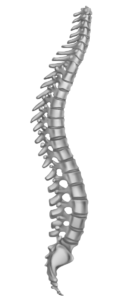
Outcomes

Outcomes overview
Dr Sergides believes surgeons should audit their results as objectively as possible, particularly in private practice. Results of his surgeries are monitored by close clinical follow-up and also the use of outcome questionnaires. He is very grateful to his patients who return outcome forms. This allows Dr Sergides to audit his practice to ensure he is achieving the best results he can.
Questionnaires are completed pre-operatively and at 6 weeks, 6 months, 12 months and 24 months. The outcome data forms are filled in either on paper or an iPad in the rooms during a visit, via an online link or forms sent in the mail. The overall follow-up return rate for the period presented is 92.8%.
As well as outcome data / results, Dr Sergides monitors a great deal of other clinically relevant data regarding his surgeries. For example; indications for surgery, length of surgery, estimated blood loss, return to work rate and other data which can be compared to international standards.
Recent results (consecutive patients from January 2018 with a median follow up of 12.8 months and a range** of 40 months) of surgery for several more common spinal operations are presented here. Data presented includes:
- Patient demographics [age and sex]
- Numbers of patients within the date range
- Follow up return rate
- Average and range of follow up
- Pain score – a visual analogue sale where patients rate their pain on a scale of 0-10
- Oswestry disability index [ODI] – this is a measure of the level of disability specific to a patient’s suffering from a particular spinal disorder. Either low back or neck.
- Patient satisfaction – includes a number of questions such as “how would you rate the success of your surgery?” and “was the surgery worthwhile?”
Data presented are for patients treated in private practice. Data related to worker’s compensation or third party have been removed for the purposes of this presentation.
A number of patients had had previous surgery by other surgeons and were being re-operated by Dr Sergides. These “revision of cases performed by other surgeons” have remained in the data presented here.
Exclusions:
Certain patients have been excluded from follow up. Examples of exclusion criteria include:
- Patients with less than 6 months follow-up
- Patients with tumours or major trauma
- Patients with solely motor symptoms
*follow up rate too low for objective analysis
** Range of follow up data means the number of months difference between the earliest and latest follow-up.
